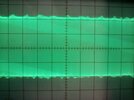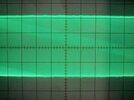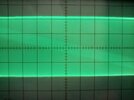I have above radio, the counter is noisy but only noticeable during transmit. You can drop the mic gain to zero and the noise is greatly reduced, but still noticable. Unplugging power to the counter module (J409) removes all noise. Unplugging the first connector (J410 pins 1-19) also removes the noise. This module was recapped and appears to work great otherwise. It proactively had the TSB 1232 done to it also. All the solder joints look good and the caps are oriented correctly.
Carrier, mic gain max, fc on.

Carrier, mic gain min, fc on

Carrier, mic gain down, fc off (unplugged)

Switching functions, counter, auto or time, has no effect. It is there when the led segments are lit on the display basically. Someone strapped a 1k resistor to the voltage divider of the power supply causing near 16v DC to the radio/counter. I thought this may have cooked something in the counter. I repaired that to get 13+ volts. It is present when using the onboard power supply or external.
Carrier, mic gain max, fc on.

Carrier, mic gain min, fc on

Carrier, mic gain down, fc off (unplugged)

Switching functions, counter, auto or time, has no effect. It is there when the led segments are lit on the display basically. Someone strapped a 1k resistor to the voltage divider of the power supply causing near 16v DC to the radio/counter. I thought this may have cooked something in the counter. I repaired that to get 13+ volts. It is present when using the onboard power supply or external.
